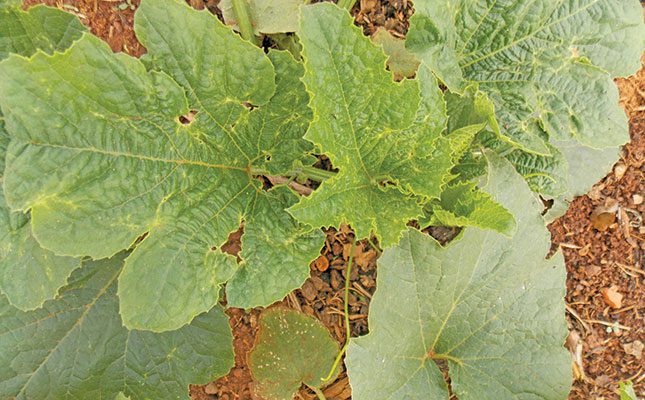
Photo: Bill Kerr
All input costs have become more expensive, and fertiliser is no exception. For this reason, it makes sense to have a soil analysis carried out before applying fertiliser so that you know what’s needed to grow a successful crop. Without this, you could easily under- or over-fertilise.
In addition, all the other aspects, including land preparation, seed, irrigation and crop chemicals, will not be fully optimised when your fertilisation is wrong.
Fertiliser programmes differ markedly from crop to crop. For example, the way that you tweak the nitrogen component will change from crop to crop as well as according to conditions. But the basic balance and availability of the other elements do not differ to any great extent.
The soil analysis will show what’s lacking. A shortage of phosphorus and potassium, for instance, will affect all crops to some extent.
Cucurbits are moderately tolerant of a low pH (between 5,5 and 6,8). However, I’ve grown them successfully at a higher pH. The pH affects the availability of various nutrients, such as phosphorus.
Molybdenum
If the soil is on the acidic side, there is almost sure to be a deficiency of molybdenum, which causes the leaves to yellow, mainly around the edges. A handful of sodium molybdate per hectare sprayed over the crop will rapidly correct the problem.
If you have a fairly acidic soil, soak the seeds overnight in 15g of sodium molybdate dissolved in 5ℓ of water. Dry them afterwards or plant them straight away.
boron
Boron is another element to be aware of when growing cucurbits. Certain crops suffer more than others when levels are low; cauliflower and beetroot, for example, are particularly sensitive.
Boron varies in its availability according to climatic conditions and the soil’s organic content. Symptons of deficiency may develop and then suddenly stop.
Many farmers apply a precautionary boron foliar application a month after crop emergence, which is good practice.
Symptoms of a boron deficiency are holes and tears on the leaves. This may sometimes be confusing, as bollworm moths lay eggs on the tender young leaves at the end of a runner and the newly hatched larvae may create symptoms similar to those of a boron deficiency.
If the holes are caused by a bollworm, only the odd plant will be affected. With a boron deficiency, all the plants alongside will also have symptoms.
The first sign is pale yellow spots or lesions that later form tears and holes, as can be seen in the photograph.
Nitrogen
In the case of nitrogen, much depends on the organic content of the soil, the rainfall, and what amount was initially applied. If the soil is in poor condition, it’s worth making a light application a couple of weeks after emergence. Other than that, watch the leaf colour and plant vigour to determine whether another application is necessary.
Bill Kerr is a vegetable specialist and breeder.











